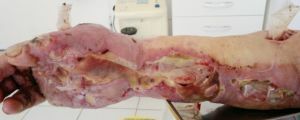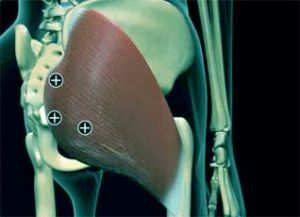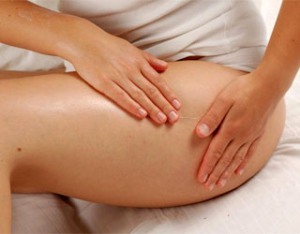
Trochanteritis of the hip joint( TX) is a disease in which is observed in the inflammation of a part of the hip bone , which is referred to as the trochanter.
Often this inflammation spreads to the tendons of a number of located muscles, as well as ligaments.
This disorder is confused with a disorder such as coxarthrosis of the femoral joint,pains in the legs, observed with such inflammation, are similar to those that occur with arthrosis.
Contents of the article
- Classification of the disease
- Causes of the disease
- Risk groups
- Symptoms and signs
- Treatment of the disease
- Traditional medicine
- Complications
- Preventive measures
- Video: Shock wave therapy
Classification of the disease
There are three types of inflammation:
- Tuberculosis. A significant part of this type of disease, that is, a violation is observed in people suffering from tuberculosis, tk.it affects not only the lungs, but also the bones and joints. The focus in this situation is often concentrated in the hip bone. Usually, the coxite appears with neglected forms of tuberculosis, when both the patient and his doctor already know about the disease.
- Septic. This inflammation of the bone caused by microbes, often staphylococcus. In this case, the disorder is the result of osteomyelitis or another severe disease - sepsis. Staphylococcus is an aggressive microbe. Most of the abnormalities that it causes are combined with fever, as well as serious destruction of the involved tissues. If the infringement is revealed with delay, the infection can destroy the hip bone.
- Aseptic. The term "aseptic" means that there is inflammation that has occurred without the participation of microbes. Often, when a person is mistakenly put "arthrosis", there is exactly this inflammation of the hip bone.
Causes of the disease
Causes of trochanteritis of the hip joint:
- large loads that occurred simultaneously;
- violations of the structure of the pelvis or legs;
- injury;
- supercooling;
- excess weight, especially arisen in a short time;
- penetration into the thighs of tuberculosis bacteria;
- hit by other microbes.
Risk Groups As for the tuberculous and septic type of deviation, their causes are clear from the names.
The risk group of people who develop deviation include:
- women after 35 years with hormonal changes and metabolic disorders in the bones and joints;
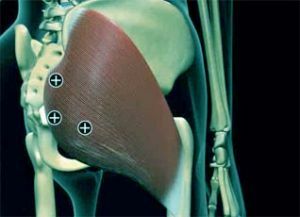
- people with rheumatic abnormalities;
- inactive people;
- suffered a damage;
- people who have increased the load on the joints of the thigh;
- those who have increased the load, especially if it was combined with general hypothermia.
Symptoms and signs
The main symptom in the pathology - joint pain in the hip , which are felt in the groin. Pain manifests paroxysmal when moving.
At rest, pain does not disturb. In advanced cases, pain disorders can occur at night with such a sign - strengthening when lying on the affected side.
Treatment of
disease Treatment of the disorder should be initiated after diagnosis and exclusion of the microbial cause of the disorder.
Treatment of trochanteritis of the hip joint of a tubercular form is carried out by anti-tuberculosis drugs. When the abscess is produced, it is punctured and the pus removed, then the iodoform composition is injected.
If there is an isolated focus of tuberculosis, excision of all damaged tissue is indicated.
Antibacterial agents are used for the treatment of septic species. In severe form, the intervention is indicated. After it they impose a plaster for a month.
This operation is called a bursectomy. When conducting bursectomy, the gluteal tendon should be carefully examined, if it begins to break down and there is detachment, the excision of the bursa will not eliminate the symptoms of the disease without treating the tendon flaking of the buttock.
 Treatment of aseptic disorder is reduced to measures aimed at neutralizing manifestations of inflammation and restoring the joint.
Treatment of aseptic disorder is reduced to measures aimed at neutralizing manifestations of inflammation and restoring the joint.
To begin with, it is necessary to keep the leg in the air. Also, massage with the use of gels with joints useful for the joints( cream "Alezan") is extremely useful. Positives will be affected by ointments and gels with non-steroid substances( Fastum-gel).
Later they use special gymnastics with trochanteritis with the use of post-isometric relaxation.
It is also necessary to take non-steroidal medications in tablets. This will help to neutralize the pain and inflammation in the joint and tendon.
Physiotherapeutic measures are useful in frustration:
- laser treatment;
- ultrasound;
- electrophoresis.
Shock-wave action has shown good efficiency. This method is used in the treatment of large joints. For treatment, 6 sessions are sufficient, which take place with a break of 5 days between them.
Only a combination approach helps to cure a violation.
Traditional medicine
Treatment of inflammation in people's ways is to use anti-inflammatory infusions and ointments on herbs. Typically, these are the following formulations:
- calendula tincture;
- composition of sage and chamomile;
- infusion of wormwood.
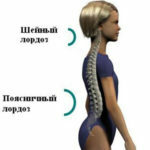 To learn how to cure lordosis lumbar is worth exploring our material.
To learn how to cure lordosis lumbar is worth exploring our material. In what cases is a medical bus and a step-by-step technique applied to the Cramer bus with damage to the legs and hands.
Complications of
Complications include the transition of the disorder to a chronic form and the appearance of an adhesive capsulitis, which over time can significantly limit mobility.
The forecast is often positive. After surgical treatment, the patient has the opportunity to return to normal life and sports, but not immediately. Self-treatment is not safe.
Preventive measures
Prevention is aimed at preventing activities that cause the development of the disorder:
- avoid monotonous actions with an emphasis on the hips;
- lack of excess weight;
- application of special footwear at legs of unequal length;
- maintenance of strength and flexibility of the femoral muscles;
- Avoid activities that involve repetitive movements of any part of the body where possible.
Video: Shockwave therapy for joints
Interview with a doctor about modern methods of treating shock wave therapy of joints and spine.

